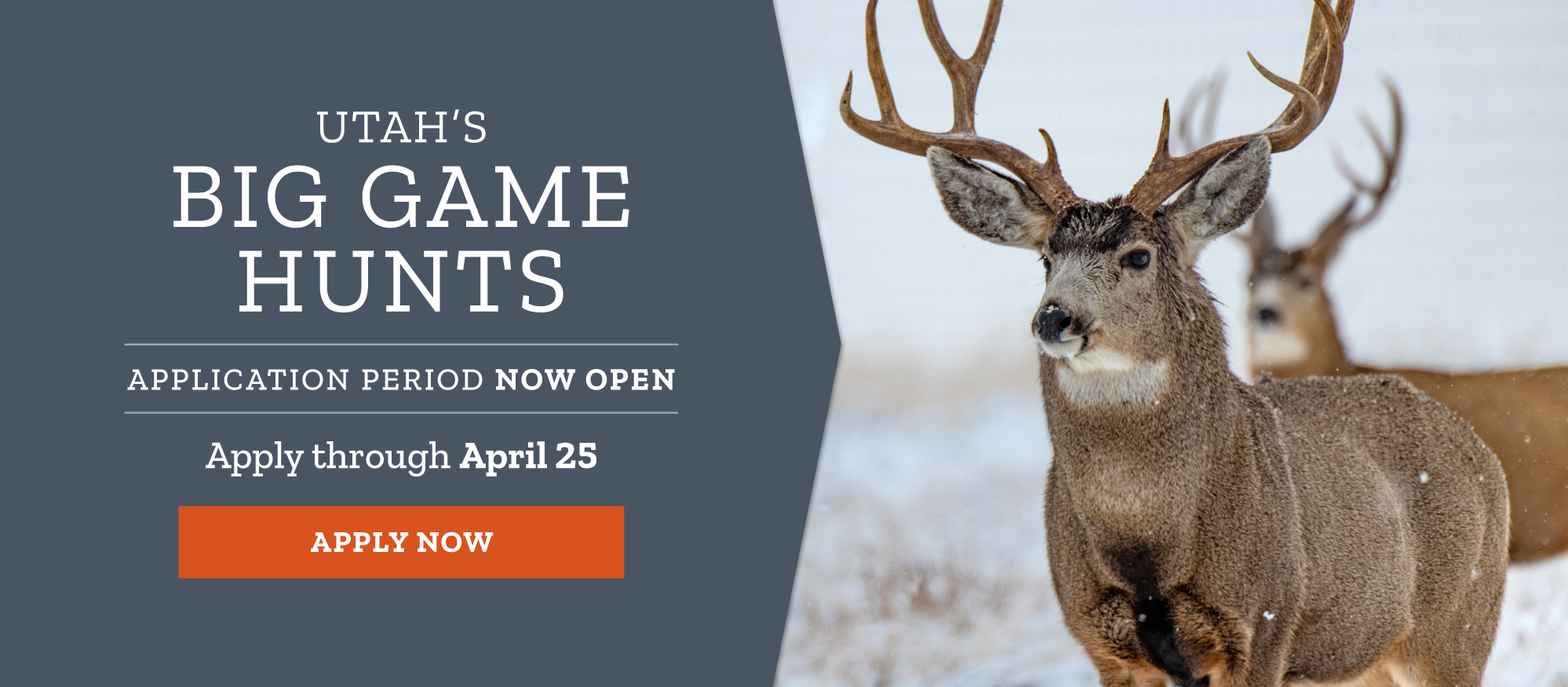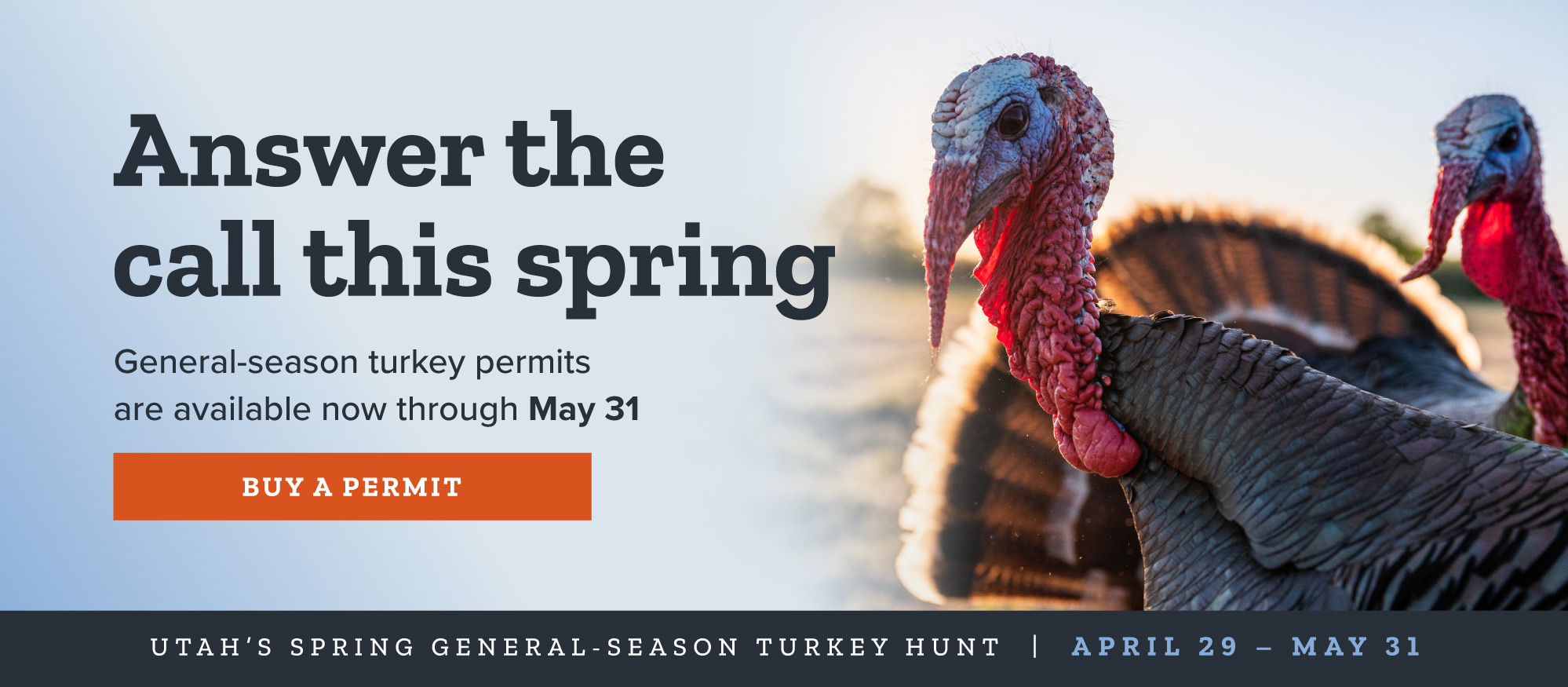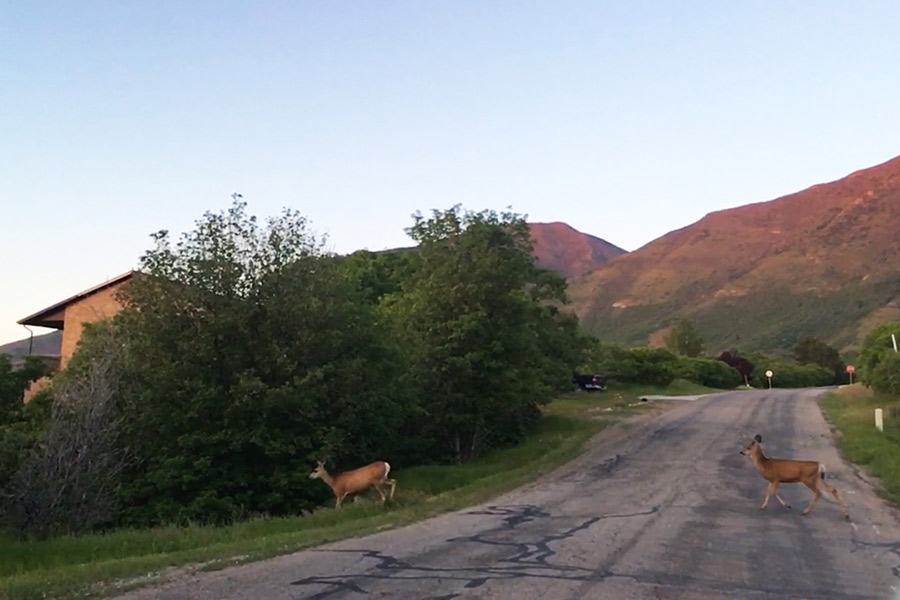Tips to avoid deer/vehicle collisions after daylight saving time ends
Salt Lake City — While Utahns will gain an extra hour of sleep on Sunday due to daylight saving time ending, the time change also means that the evening commute for a lot of Utahns will be during lower-visibility hours, which can increase vehicle/wildlife collisions.
During the fall and winter months, there is an increase in wildlife along the roadways, primarily due to big game animals migrating to lower elevations in search of feed, according to Daniel Olson, the Utah Division of Wildlife Resources wildlife migration initiative coordinator. The migration period for deer is typically April and May, and then again in November, which is also when the highest number of vehicle and deer collisions occur in Utah.
"The peak time to hit deer in Utah is around November," Olson said. "It coincides with mating season and the migration. Animals are crossing more roads during the migration, and male deer move around a lot more to find mates. Plus, it doesn't help that the daylight hours are shorter, creating lower visibility for drivers."
According to a DWR study, there were approximately 10,000 deer-vehicle collisions in 2012. However, Olson estimates those numbers are lower now because more fences and wildlife bridges have been installed along migration routes across Utah highways in recent years. There have been at least 3,500 deer/vehicle collisions reported already this year, and the actual number of collisions may be double that number.
Deer are more active early in the morning and in the evenings, which coincides with busy commuting hours. This is also when low-light conditions make it difficult for drivers to see.
How to avoid wildlife collisions
As daylight saving time ends, here are some tips from Wild Aware Utah to help you avoid wildlife collisions:
- Be especially alert at dawn and dusk.
- Heed wildlife crossing signs. These signs are usually placed in areas known to have a high volume of wildlife/vehicle collisions.
- Be alert on roadways near wooded, agricultural and wetland areas and also near lakes and streams.
- Scan both sides of the road as you drive. Invite passengers to help watch for wildlife.
- Do not drive distracted. Put away food, phones and other distractions.
- When possible, use high-beam headlights to better illuminate the road.
- Look for an animal's eyeshine, which can be seen from a distance. Slow down once you have spotted an animal near the roadside.
- Some animals travel in groups, so be sure to watch for additional animals if you see one.
- Do not throw trash out of your vehicle. Not only are there penalties for littering on a highway, but trash and food scraps can also draw animals to roadways.
What to do if you see an animal near or in the road
If you see an animal near the road, here are some additional suggestions:
- Do not swerve for a deer or small animal. Stay in your lane and slow down.
- If several animals are standing in the road, do not try to drive through them or get out of the vehicle to chase or herd them. Honk your horn and flash your lights to encourage them to move on.
- If an animal has crossed the road, continue to drive slowly and be cautious because it may try to cross again.
What to do if you hit an animal
- Pull off the road and use your hazard lights if your car is undriveable.
- Do not try to approach an injured animal.
- Call 911 or contact your local police department if you were injured or if the animal is in the roadway and could pose a threat to public safety.

















